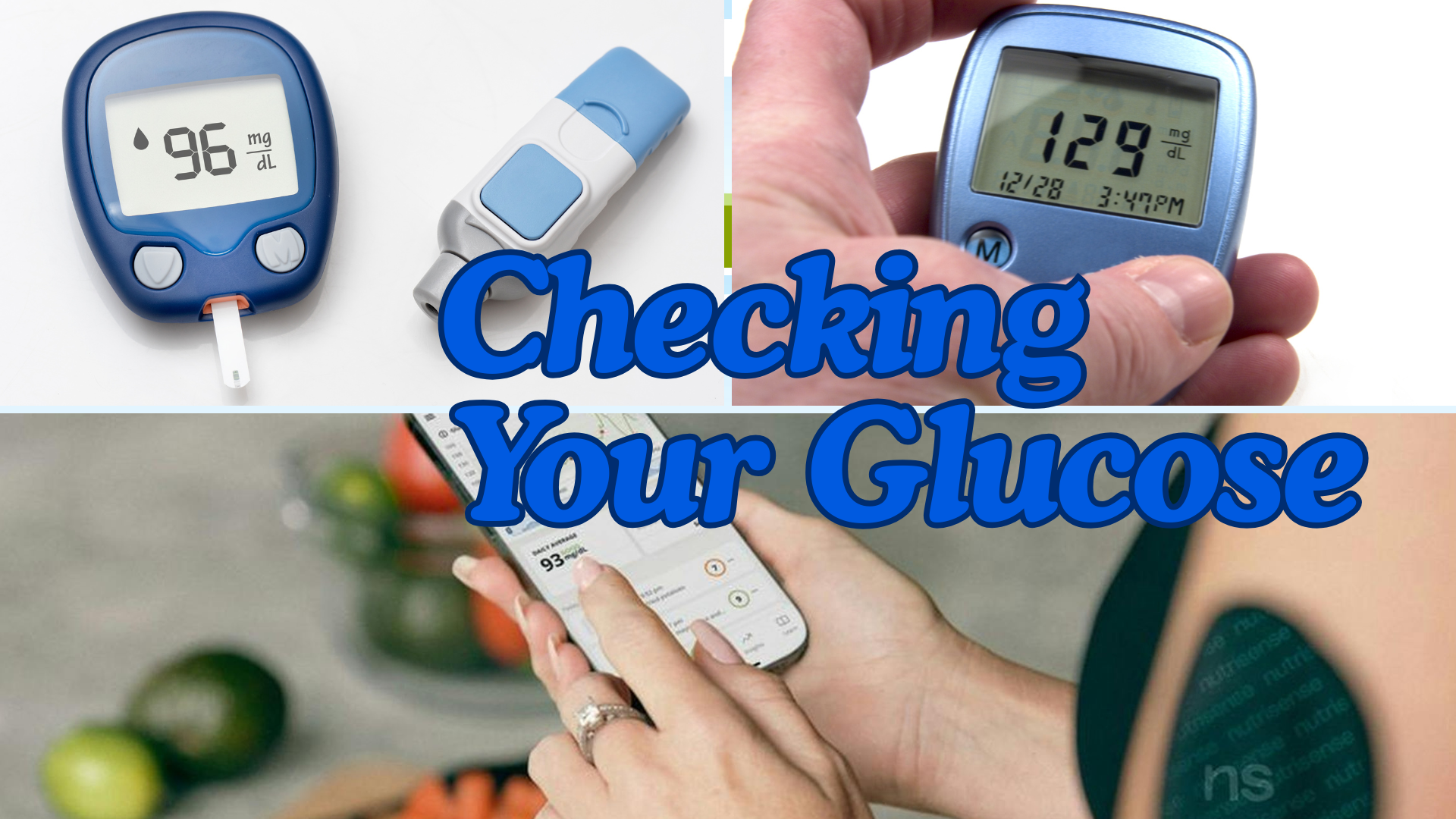When Should I Check My Blood Sugar?
NOTE: This post contains affiliate links. As an Amazon Associate, I earn from qualifying purchases at no additional cost to you. I only recommend products I personally trust and believe may be helpful for people living with diabetes or those interested in glucose monitoring.
A Simple Guide for People Living with Diabetes or Prediabetes
Checking your blood sugar is an important part of taking care of diabetes. Your glucose numbers help you understand how food, exercise, and medicine affect your sugar levels. Whether you use a glucose meter or a continuous glucose monitor (CGM), knowing your blood sugar helps you stay healthy.
How Often Should You Check Your Blood Sugar?
How often you check depends on your treatment plan. As always, it is best to discuss with your health care team about what is best for you. Here’s a simple guide:
If You Manage Diabetes with Food and Exercise
If you manage your diabetes with healthy eating and physical activity, checking once a day may be enough. Change the time of day you test to learn about your sugar levels. For example:
Test in the morning before eating (this is called fasting glucose).
Test before or after meals to see how food affects your blood sugar.
Test before bed to see how your day went.
If You Take Pills or Non-Insulin Injections
If you take medicine to help control your diabetes, check your glucose every day. The number of times you check can vary depending on what medicines you are taking. It is especially important to test if:
Your doctor changes your medicine or dose.
You change your activity level, such as starting to exercise more.
These changes can affect your blood sugar, and testing helps you see what’s working.
If You Use Insulin
Checking your blood sugar is very important if you use insulin. How often you test depends on the type of insulin you use:
Long-acting insulin: Test 1–2 times a day, such as:
Before bed.
In the morning before breakfast.
Rapid-acting insulin: Test more often, especially:
Before meals.
Before going to sleep.
Both long- and rapid-acting insulin: Test 3–4 times a day or more as needed, including before meals and at bedtime.
If You Feel Sick
If you feel dizzy, tired, or “off,” your blood sugar might be too high or too low. Checking your blood sugar will help you find out if the symptoms are related to your blood sugar. Having glucose data can help you make changes if needed.
It’s always good to share all your glucose data with your healthcare team. The blood sugar readings can help you and your team spot what is working and what changes need to be made to help your glucose levels be the best they can be.
The Paired Meal Test
Do you want to know how food affects you? Check your sugar before eating and again two hours after. You’ll see which foods help you stay in range and which ones raise your sugar too much.
This is a great practice for people with diabetes, prediabetes or if you are “gluco-curious.” Paired meal testing can help you spot what meals are causing your sugar levels to be higher.
Continuous Glucose Monitors (CGMs)
If you don’t like doing fingersticks, a continuous glucose monitor (CGM) might be a good choice. These devices:
Stick to your skin and last 10–15 days.
Check your glucose every 1–5 minutes.
Show your sugar patterns over time.
CGMs are a great tool for anyone interested in seeing how their glucose changes throughout the day. Many insurance plans will cover them for people that have a diagnosis of diabetes and use insulin. Ask your doctor if a CGM is right for you and check with your insurance provider to ask about coverage.
Checking Your Glucose with Prediabetes
If you have prediabetes, checking your blood sugar at home can help you understand how your daily choices — like food, activity, and sleep — affect your glucose levels. You don’t need to check as often as someone with diabetes, but occasional testing can give you great insight and help you make small, meaningful changes.
A continuous glucose monitor (CGM) can also be a good choice. There are CGMs that can now be purchased over the counter without a prescription. Two models are currently available in the United States and are recommended for people with prediabetes, type 2 diabetes not using insulin, or anyone who’s simply “glucocurious.” These CGMs are much simpler in data collection and can help you learn more about your body’s response to food and activity.
These CGMs are:
You can learn more about each one by clicking each link above. If you are interested in buying one, you can order via Amazon using this affiliate link. Please note: The Stelo and Lingo are NOT recommended for use for patients with type 1 diabetes or those with type 2 diabetes that take insulin.
Key Points to Remember
Testing helps you stay in control: It shows how food, activity, and medicine affect your blood sugar.
Make a plan: Talk with your healthcare team about how often you should test.
Use smart tools: CGMs can make testing easier and give you more information about your blood sugar.
Small habits can help: Increasing fiber, walking after meals, or managing stress, can make a big difference.
Remember:
Checking your blood sugar is one of the best ways to take care of your health. Talk to your doctor or care team if you have questions about testing or want to try a CGM.

